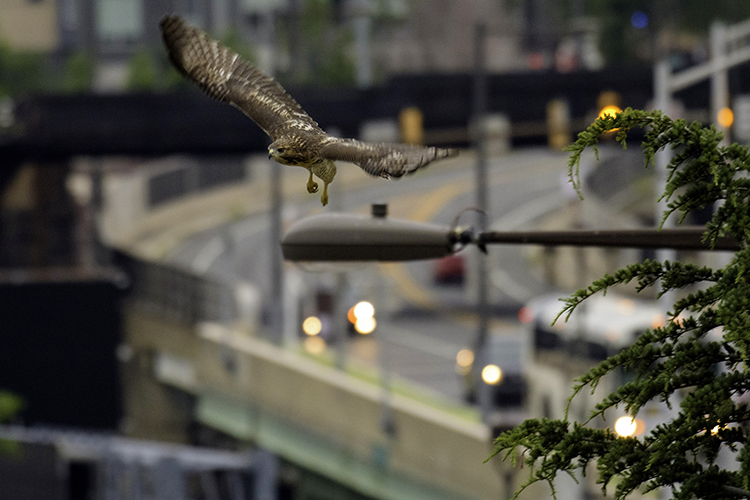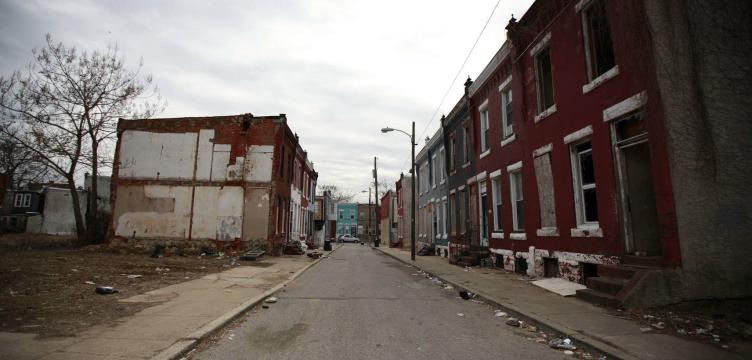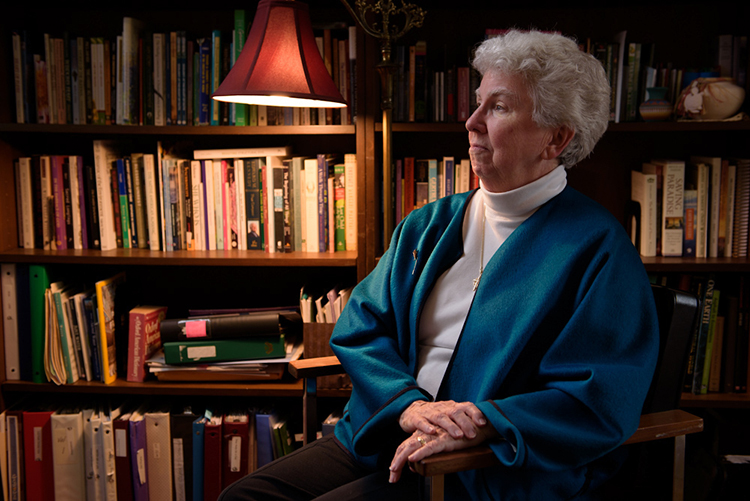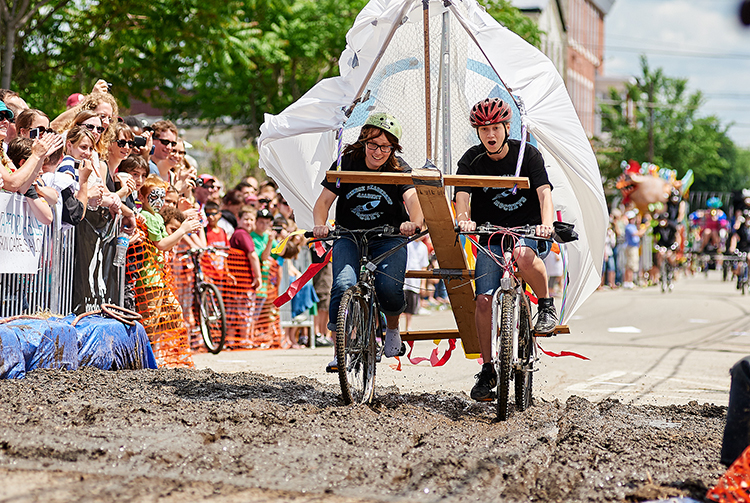“Mom,” a red-tailed hawk and Philadelphia’s most-watched bird, napped in a small London plane tree next to Sister Cities Park on a gray winter morning. On the sidewalk below, I joined Christian Hunold, associate professor of political science at Drexel University and a nature photographer. We suspected Mom had already filled her crop with rat meat by the time we found her. Carolyn Sutton, one of the most dedicated members of Philadelphia’s hawkwatching community, had run off to track down Mom’s paramour, a younger fellow named T4 (“T” for “tiercel,” the proper term for a male hawk). She found him a few blocks away ripping into another unlucky rat. Just another morning for an urban hawk family.
If you spend much time in Philadelphia, you have probably seen Mom, T4 or another of our urban red-tailed hawks. If not, now that you’ve read this, you will start seeing them everywhere: perched on rooftops, cruising over the road you’re driving on, swooping down to grab a squirrel while you eat lunch on a park bench. You’ll hear them too.

“Red-tails make the greatest noise you’ve ever heard a bird make,” says environmental educator and BirdPhilly co-founder Tony Croasdale. The result is that their fearsome keee-aaaah scream is the go-to audio track anytime any raptor, such as a bald eagle, appears in a movie (bald eagles actually sound like giggling chickens).
Red-tailed hawks are not too picky about where they’ll put the pile of sticks they call a nest, and just such a nest at the Franklin Institute made Mom and her family famous. In 2009 she and her then-mate “Dad” built a nest on a ledge outside a conference-room window. Like any self-respecting science museum, the Franklin set up a camera to livestream the hawks.
As so often happens, the live nest cam attracted a crowd. “There’s something about being able to see everything the birds are doing and every bit of the birds growing up that you can’t take your eyes off it,” Sutton explains. The nest cam website had a chat feature that fostered a community feeling among the avid watchers.
Sutton, a retiree living in East Falls, soon started coming down to the Franklin Institute with her camera and binoculars to get a view of hawk activity not visible on the nest cam. There she met other hawkwatchers in the flesh, including Della Micah, who decided to start a blog, Hawkwatch at the Franklin Institute. Their observations and photos supported the blog as well as a Facebook group, Franklin Hawkaholics.
Nine years is a long time for a hawk family. Dad got killed by a car after a few years living under the media spotlight. Mom found a new love, T2, but he was found dead near 30th Street Station, and T3 died from rodenticide he ingested via a poisoned rat. In 2012, two fledglings perished after crashing into the windows of the Moore College of Art and Design, and, perhaps motivated by the poor fledgings, the hawks moved their nest up the Parkway to a tree in Eakins Oval.
Along the way the hawkwatchers got more involved in protecting the hawks. “It started off quiet, and now it’s become this activist thing,” Sutton says. Their advocacy led Moore to hang scrim artwork in front of the dangerous windows to warn away any hawks unfamiliar with glass. T3’s demise spurred a recent petition to Mayor Jim Kenney to ban the sale of the class of rodenticide that killed the hawk.
Hunold found a new line of research through the hawkwatching community.
“Suddenly this whole ecology revealed itself. The prey animals—the rats, the pigeons, the squirrels—the human community that had sort of grown up around the hawks to the point of naming them and being able to identify individual animals, and so the Parkway revealed itself to be prime wildlife habitat right here in the middle of the city in a way I hadn’t thought about or been aware of,” Hunold says. “It calls into question the ideas we have about where nature is supposed to be and not supposed to be in a city.”
His research into the hawks and their fans culminated in a 2017 paper, “Why Not the City? Urban Hawk Watching and the End of Nature,” published in the journal Nature and Culture.
Want to join the club? “Wherever you think there should be a red-tail nest, there is one,” says Hunold, who noted nests every mile or so along the Schuylkill River as examples. And wherever there is a hawk family, there can be a community of hawkaholics rooting for them.
Bernard Brown writes about nature, goes herping and podcasts about urban wildlife in Philadelphia.









